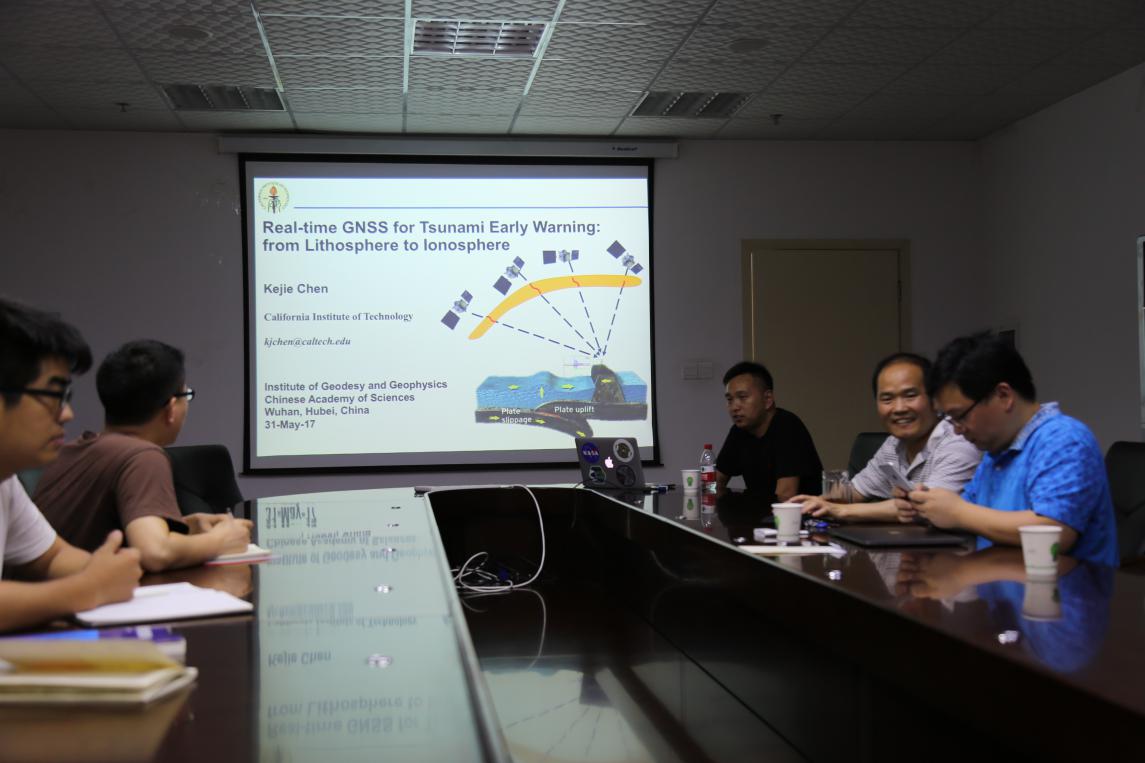Invited by State Key Laboratory of Geodesy and Earth’s Dynamics (SKLGED), Dr. Chen Kejie from California Institute of Technology visited Institute of Geodesy and Geophysics(IGG) and gave an academic report in title “Real-time GNSS for tsunami early warning: from lithoshpere to ionosphere” on May 31.
The report firstly introduced the unique advantages of GNSS technology in earthquake/tsunami warning, and then systematically reviewed the new method of rapid acquisition of seismic deformation by using Lithosphere GNSS in recent ten years, and then analyzed the seismic rupture inversion based on GNSS coseismic deformation method. He used the deformation information of the seabed to simulated the process of tsunami propagation and the scope of damage, and issued tsunami warning information. During the propagation of the tsunami, gravity waves will be stimulated, which led to disturbances of the ionosphere. The disturbance of the ionosphere can also be measured by GNSS, and its value can be used to verify the correctness of the tsunami propagation model. The audiences had a deep discussion with Dr. Chen about related research at the end of the report.
Dr. Chen received his Ph.D. degree from German Research Centre for Geosciences (GFZ) in 2016 and then worked as a postdoctoral researcher at California Institute of Technology. He is mainly engaged in GNSS precision positioning, satellites orbit determination data processing and its application in natural disasters.

Dr. Chen was giving his report.

